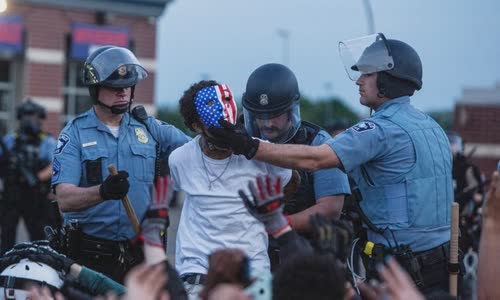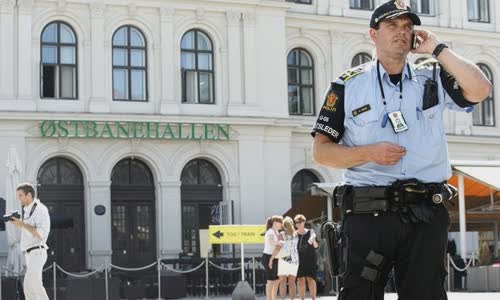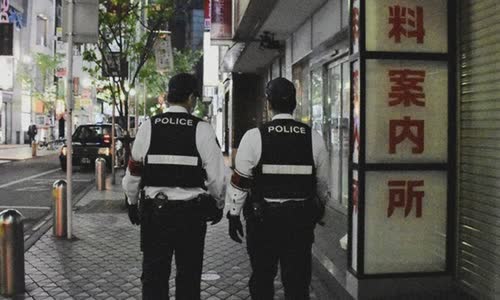The manipulation of the neck to control suspects and the use of weapons by American police is almost not used by colleagues in Europe.
Police violence is a painful problem in the United States, sparking many public protests.

Police arrested a protester in Minneapolis, Minnesota, on May 31 Photo: NYTimes.
Paul Hirschfield, associate professor of sociology at Rutgers University, USA, said the US police profession is quite similar to Latin American countries, but very different from many other countries in the world, especially in
US police patrol always carry guns and are allowed to open fire in many cases when the suspect shows signs of disobeying orders or objections.
Many of these countries are also famous for police violence.
Iceland is one of the countries that can effectively use this approach despite its relatively high gun ownership.
Gun ownership rates of people are quite high, but Icelandic police often do not carry military weapons when on duty.
However, terrorist incidents in recent years have led many countries such as Britain, New Zealand or Norway to reconsider this regulation.
Norway faced a similar option after the shooting of Anders Behring Breivik, which killed 77 people in 2011. By 2014, police officers began carrying guns more frequently due to fears of being attacked.

Norwegian police stand guard subway station in the capital Oslo, after a terrorist threat in July 2014 Photo: AP.
Although police are still armed in most of Europe, nowhere is death rates as high as that of the United States.
Hirschfield said that the factor that could make American police escalate tensions and use force more than Americans own weapons more than Europeans.
"Due to regulatory differences, a US police shooting may be considered legal, but not by European standards," Hirschfield said.
The countries of the European Union (EU) also set their own rules within the common legal framework of the bloc.
According to the rules of the Minneapolis police department, Minnesota, USA, the act of putting pressure on the suspect's neck, as in the case of Derek Chauvin police using Floyd's knees knuckle for nearly 9 minutes, can only be used when the police
In most European countries, police are prohibited from using a neck-pin, or strangulation, according to Hirschfield.
France is an exception in Europe.

Japanese police patrol in Nakasum entertainment district, Fukuoka city, April 16 Photo: Mainichi.
According to international law, "the police should only use force as a last resort and minimize as much as possible", and clamping the neck is also considered a form of serious violence, according to Patrick Wilcken, researcher
In terms of professional training time, US police usually take an average of 19 months before starting work, while in most European countries, this time is three years.
In Europe, the police training process often focuses on how to use time and space to reduce threats, as well as low-risk weapons such as electric guns.
In contrast, reducing stress escalation is often overlooked during the training of US police, according to Hirschfield.
The image of US police using tear gas, rubber bullets and other drastic tactics to suppress protesters in the past week has surprised many analysts and reporters, especially those who have studied
Jennifer Earl, a professor specializing in the study of police and demonstrations at the University of Arizona, said that the US police are not too fierce when dealing with people like some countries of the Middle East, Russia or Turkey.



 Elizabeth Shaw
Elizabeth Shaw







